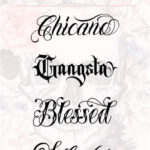The landscape of personal expression has dramatically shifted in recent years, with Tattoos And Piercings taking center stage as increasingly accepted forms of self-expression. As body modification practices become more widespread, particularly amongst younger generations, a crucial question arises: are tattoos and piercings now considered professionally acceptable in today’s workplaces?
Historically, a professional image was often associated with conventional appearances – think neat haircuts, formal attire, and conservative demeanors. The argument persisted that customers held certain expectations regarding employee appearance, and that visible tattoos or piercings could trigger negative perceptions, potentially harming business reputation and customer loyalty. Concerns were raised that employees sporting body modifications might be viewed negatively, leading to decreased customer satisfaction and ultimately impacting a company’s bottom line.
However, personal experiences and evolving societal norms challenge this outdated perspective. Working within a retail environment that celebrates alternative pop culture provides a compelling counter-narrative. This particular store, catering to a diverse clientele beyond just the 18-24 demographic, embraces individuality. Employees, myself included, proudly display alternative clothing, vibrant hair colors, multiple piercings, and visible tattoos. Despite this, negative encounters related to body modifications are remarkably absent.
Instead of negativity, the reality is overwhelmingly positive. Customers of all ages and backgrounds – families, seniors, and young children alike – frequently express admiration for the unique styles of the staff. This positive attention fosters genuine connections with customers, transforming perceived barriers into opportunities for engagement. Far from detracting from the customer experience, tattoos and piercings often serve as conversation starters, sparking interest and curiosity. Countless interactions have evolved into in-depth discussions about piercing aftercare or recommendations for reputable tattoo studios. This personal expression, far from being a hindrance, actively enhances customer interactions and cultivates a more welcoming and approachable atmosphere. The opportunity to demonstrate that individuals with alternative appearances are equally capable and professional is invaluable and highlights the importance of inclusive workplace environments.
It’s important to acknowledge that certain professions may present legitimate safety concerns regarding body modifications, particularly facial piercings. Roles in law enforcement, food service, or the military often involve physical activity and regulated environments where piercings could pose a risk. Piercings can indeed become snagged on equipment or surroundings, creating potential hazards in strenuous work scenarios. In fields like law enforcement or the military, facial piercings could even be exploited as a point of vulnerability in physical altercations. Therefore, in specific high-risk environments, reasonable restrictions on facial and ear piercings are understandable and justifiable from a safety standpoint.
Another common concern revolves around the “slippery slope” argument. Some worry that relaxing dress code policies to accommodate some tattoos or piercings will inevitably lead to a complete abandonment of professional standards. There’s a valid point within this concern; subjectivity exists regarding what constitutes “professional” body modification. While personal styles vary, it’s true that some body modifications might be perceived as less aligned with traditional professional aesthetics. However, for the majority of mainstream workplaces, the crucial question remains: to what extent do tattoos and facial piercings actually impede entry-level employees from effectively performing their job duties?
In my own retail position, responsibilities encompass receiving shipments, managing inventory on ladders, engaging with customers, handling financial transactions, and team leadership, among other tasks. Not once have tattoos or piercings interfered with task completion or efficiency. The ability to perform job functions effectively should be the primary determinant of professional suitability, not personal appearance.
In 2023, it’s time to move beyond outdated biases. Tattoos and body modifications should no longer be considered workplace taboos. With a significant portion of the younger workforce embracing tattoos and a growing percentage sporting piercings, societal norms are clearly evolving towards greater acceptance. While some companies may still cling to outdated notions of professionalism, the increasing prevalence and acceptance of body modifications are undeniable trends.
Ultimately, body modifications do not negatively impact customer relations, nor do they diminish workplace productivity. Therefore, body art like tattoos and facial piercings should be, and increasingly appear to be, widely accepted within professional settings. They are a powerful form of self-expression, and fostering greater tolerance and inclusivity in workplaces will pave the way for a more diverse and accepting future.

